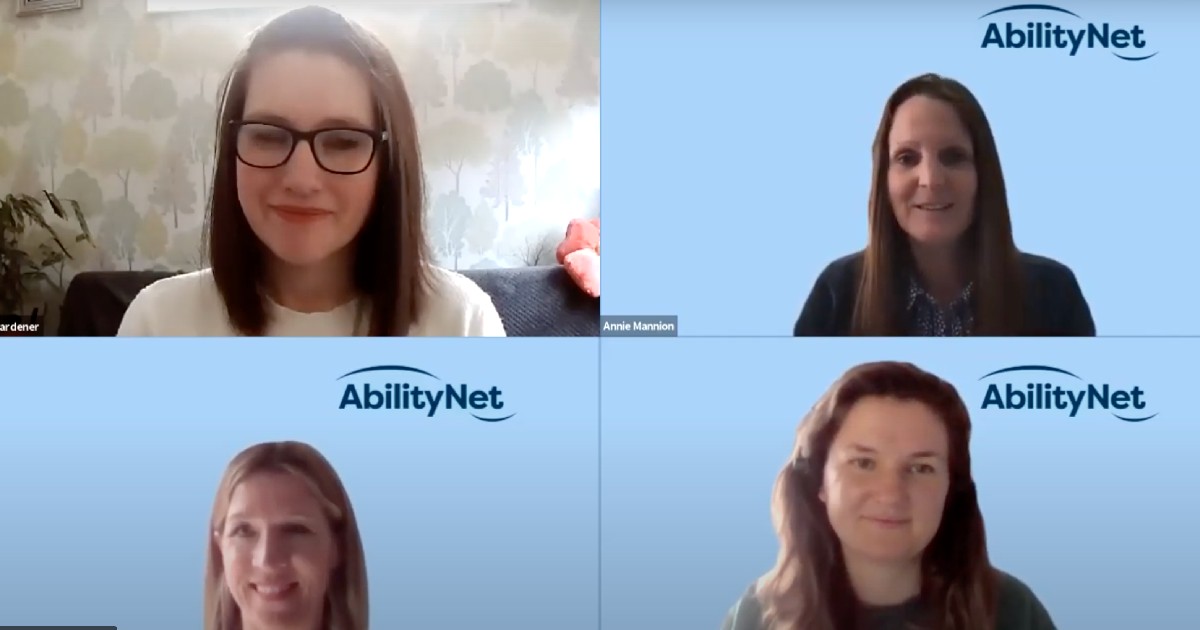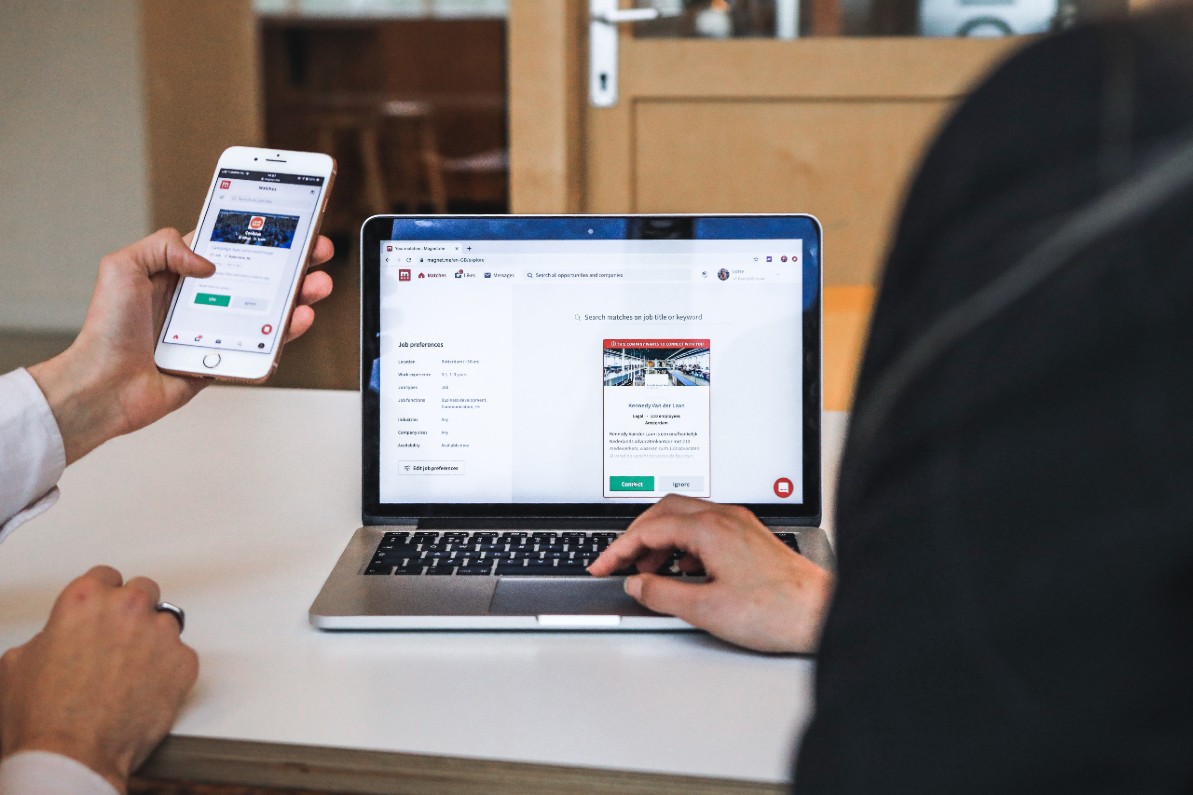How to prepare for June's mobile apps accessibility regulations deadline
Annie Mannion | 28 Apr 2021"Great informative and practical session, useful to have insight from colleagues at other unis - sharing tips, caveats and approaches from strategic and practical stance. Thank you."
That's feedback from an attendee of our recent webinar, HE/Public Sector Update: How to promote digital accessibility at your institution.

Tips for meeting mobile applications accessibility requirements
Part of our focus in the webinar was to provide an update on the Public Sector Bodies Accessibility Regulations (PSBAR), in advance of its 22nd June mobile apps accessibility deadline.
During the webinar, senior accessibility consultant at AbilityNet, Alice Taylor, spoke with Amy Low, Service Delivery Director at AbilityNet (both pictured above, with Annie Mannion of AbilityNet, and Claire Gardener of University of Derby) to share guidance about mobile applications.
Alice and Amy's advice:
- If you have in-house developed apps, make sure they are checked for accessibility
- Most public sector organisations are more likely to use 3rd party apps. Speak to suppliers ASAP and publish a statement by 23rd June 2021.

Amy also posed questions about mobile applications to Alice, including:
What is the difference between web app, mobile web app, desktop and native mobile apps?
Mobile and desktop apps: "These are generally referred to as 'web apps' and these are built with the traditional web techniques such as HTML, and Javascript. Generally they'll respond to screen size so you might see it on desktop and see it on your mobile, but it would have a different layout," said Alice.
Native apps: "These are built for a platform, so I think iOS, Android and built with technologies such as Swift. These, crucially, are different platforms so you may have an app that is on both of these platforms so it can be accessed on iOS and Android and it may look the same, but they are different, so they may have been built completely differently," Alice continued.
"So from a testing perspective you would want to look at both of them. Native apps can be downloaded from the app store while, if you have a web app, this is something that can be accessed on the internet on your browser," said Alice, also noting that as native apps are downloaded onto your device, some of its content would be available offline.
Alice answered further questions about testing techniques for mobile and testing mobile apps. Watch the webinar playback below or access the transcript to find out more:
How to grow your accessibility maturity and How to deliver and sustain accessible digital learning
Training for university staff on accessibility fundamentals
Claire Gardener, Senior Learning Technologist and lead contact for Digital Accessibility at University of Derby, also shared in the webinar how her university has developed its accessibility programme.
As a participant in AbilityNet’s Accessibility Maturity Evaluation pilot badging project, Claire and her team worked with AbilityNet to help shape the accessibility elearning module 'Accessibility and Me'.
"This really resonated with our staff who have gone through the course," said Claire. "To give them an understanding on how individuals are personally affected it is very emotive and I think it provides a really powerful imperative to change... people have said this was a really great training session," Claire continued.
Find out about eLearning modules >>
Further resources:
- Webinar playback: HE/Public Sector Update: How Cardiff Metropolitan University meets accessibility targets
- Blog: Is your public sector app prepared for the final deadline?
- Learn more about accessible mobile apps in AbilityNet's training course: Accessibility testing in mobile apps and sign up to our HE/FE training courses
- Did you know AbilityNet is a charity? Your donation can help us build a more accessible digital world.



